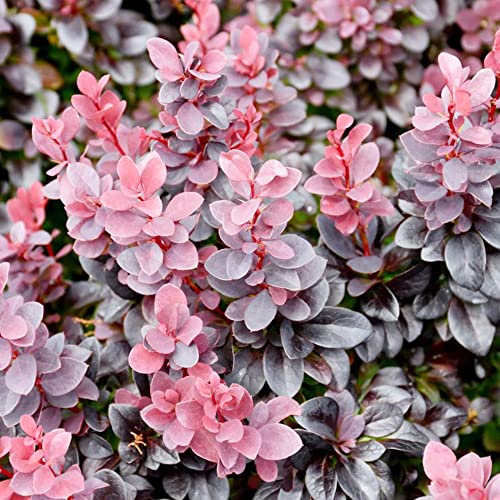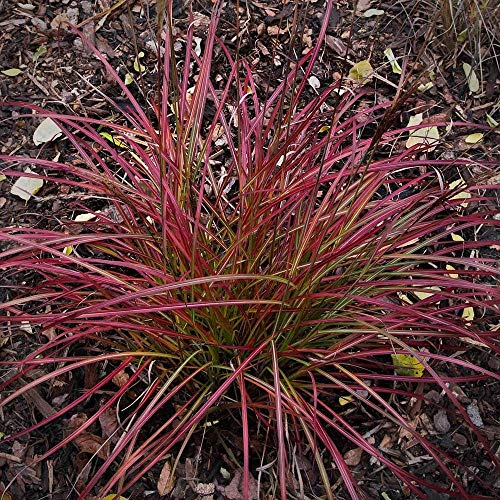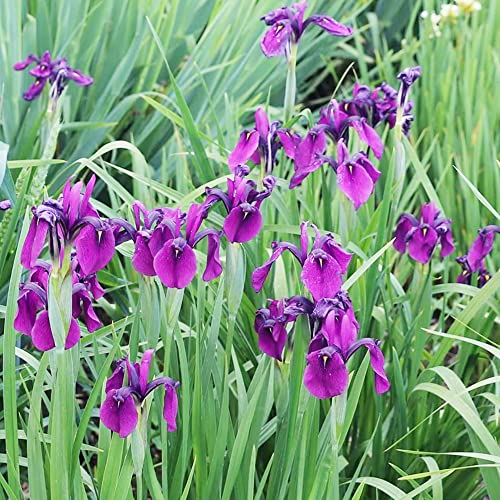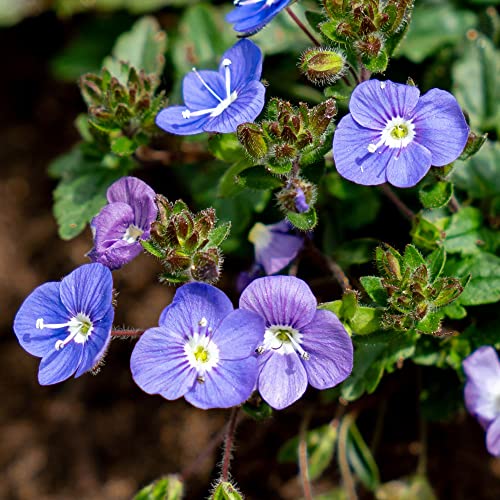Liatris is stunning. With purple spikes that are real showstoppers, you can’t miss them. But like so many plants they can be really picky about their neighbors.
So I’m going to help you avoid the heartache of watching your carefully planned garden struggle. These are the plants that liatris hates and you should keep well away from it.
Understanding Liatris
The first time I planted Liatris (also called Blazing Star or Gayfeather), I was completely taken by its tall, vibrant purple spikes. They looked so sturdy and independent that I figured they’d get along with just about anything. I was very wrong.
Liatris has some strong opinions about who gets to share its garden space. They have evolved in specific conditions that shaped their growth habits and needs. In the wild they grow in meadows and prairies where they’ve adapted to thrive in poor soil with excellent drainage. They send down deep taproots to find water, which means they don’t appreciate neighbors that compete for the same resources.
So what makes Liatris so tricky is that they need full sun (at least 6 hours daily) and excellent drainage, but they’re also drought-tolerant once established. Plants that create too much shade, hog moisture or spread too aggressively can seriously impact your Liatris display.
Main Characteristics of Liatris
- Deep taproots that can reach 15 feet down
- Drought-tolerant once established
- Requires excellent drainage
- Needs full sun exposure
- Blooms mid to late summer
- Heights range from 2-5 feet depending on variety
Now let’s look at which plants make terrible neighbors for liatris.
Plants Not to Plant with Liatris
1. Japanese Barberry
Japanese Barberry’s dense growth create too much shade. But it’s also aggressive enough to steal nutrients from everything nearby. Even worse, it’s considered invasive in many regions, crowding out native species like Liatris. The thorns make maintenance a nightmare too – definitely not worth it.
2. Mint Family Members
That cute little mint plant you are thinking about adding to your perennial bed? Don’t. It will declare war on everything, including Liatris. All mint family members (peppermint, spearmint, catmint) have aggressive, spreading roots that will quickly overwhelm Liatris’s growing space. I’ve literally had to dig up and replant everything when I tried mint and it invaded. Keep these herbs to containers if you want your Liatris to thrive.
3. Hostas
Hostas need partial to full shade, while Liatris demands full sun. I tried them together in a “transition area” of my garden, and both plants suffered. My Liatris grew spindly, desperate for more light, while the hostas got sun-scorched leaves. Their contrasting needs make them incompatible garden companions.
4. Ornamental Grasses
Those beautiful Miscanthus and Pampas grasses look great but they’re way too aggressive for Liatris. Their root systems will compete directly with Liatris’s taproots, and their spreading growth habit can quickly overshadow your blazing stars.
5. Daylilies
This one was a bit of a shock to me. Daylilies aren’t necessarily aggressive spreaders but their clumps expand steadily each year and create substantial shade. Their strappy foliage grows early in the season and can easily overshadow emerging Liatris shoots.
6. Plants That Like Wet Feet
Astilbe, Ligularia and Japanese Iris all need consistently moist soil – the exact opposite of what Liatris wants. Plant these with Liatris and someone’s going to be unhappy. Either your Liatris roots will rot from too much moisture or your moisture-loving plants will struggle in the well-drained soil Liatris needs.
7. Most Vegetable Garden Plants
Adding Liatris to your vegetable garden seems like a great idea for attracting pollinators but most vegetables need consistent moisture and rich soil. These conditions are precisely what makes Liatris unhappy and prone to flopping.
8. Heavy Feeders
Plants that need lots of fertilizer, like roses & peonies, will encourage lush but weak growth in neighboring Liatris. My experience has shown that Liatris grows stronger and more upright in leaner soil. Less is definitely more when it comes to feeding Liatris.
9. Tall Shade-Makers
Delphinium, hollyhocks and tall sunflowers might seem like natural companions for Liatris height-wise, but they can easily create too much shade, especially when planted to the south or west of your Liatris.
10. Hydrangeas
Both panicle and mophead hydrangeas create substantial shade with their broad leaves and require more consistent moisture than Liatris. I planted Liatris near my ‘Limelight’ hydrangea thinking they’d bloom at complementary times but the Liatris struggled in the shade and root competition.
11. Ground-Covering Speedwells (Veronica)
These seem innocuous but creeping Veronicas can quickly surround & choke out Liatris. Their spreading habit lets them move in while you aren’t looking.
12. English Ivy and Other Aggressive Vines
I once thought some ivy growing nearby wouldn’t affect my Liatris. Wrong again! Not only did the ivy start climbing the Liatris stems (weighing them down) but its dense root system competed directly with my Liatris. Those deep Liatris taproots don’t appreciate the competition.
13. Butterfly Bush (Buddleia)
These get large quickly and create both shade and significant root competition. The year after I planted a butterfly bush near my Liatris border, my once-reliable bloomers produced half as many flower spikes. The bush simply overwhelmed its neighbors too quickly.
Good Companion Plants for Liatris
Now that we know what to avoid what actually works well with Liatris? Here are some good companions:
- Echinacea (Coneflowers) – Similar growing conditions and complementary blooms that won’t overshadow Liatris
- Rudbeckia (Black-eyed Susans) – Their golden flowers look stunning against purple Liatris
- Butterfly Weed (Asclepias tuberosa) – Another prairie native with compatible needs
- Salvia – Many varieties work well, providing complementary blue/purple tones
- Low-growing Sedums – These succulents enjoy the same well-drained conditions
- Ornamental Alliums – Their bloom times can be staggered for continuous interest
- Russian Sage – Creates a beautiful purple haze alongside Liatris
Tips for Successful Companion Planting with Liatris
Plan for Sun Exposure
Always position taller plants to the north of your Liatris to prevent shading. This simple adjustment dramatically improved my Liatris display. They need that full sun to develop strong stems and abundant blooms.
Respect the Root Zone
Remember those deep taproots – avoid placing aggressive spreaders within 2-3 feet of your Liatris clumps. I now imagine an invisible cylinder extending deep below each Liatris plant and keep competitors out of this zone.
Water Strategically
Design your garden so plants with similar water needs are grouped together. This prevents overwatering your Liatris when you’re caring for thirstier plants. I actually installed a separate drip line for my prairie plants section to avoid overwatering.
Consider Bloom Times
My most successful combinations feature plants that either bloom simultaneously (for maximum impact) or in succession (for extended garden interest).
Start Small and Observe
Plants often behave differently in various gardens due to microclimate differences. Start with smaller groups and observe how they interact before committing to large plantings. This approach has saved me countless headaches.
Final Thoughts
Liatris shouldn’t be difficult plants once you understand their needs. But they definitely have strong feelings when it comes to their neighbors.
The secret to success lies in recreating something close to their natural habitat – prairie or meadow conditions with good drainage, full sun and compatible neighbors that won’t outcompete them. By avoiding the 13 problematic plants I’ve mentioned and sticking with more appropriate companions they’ll thrive year after year.




